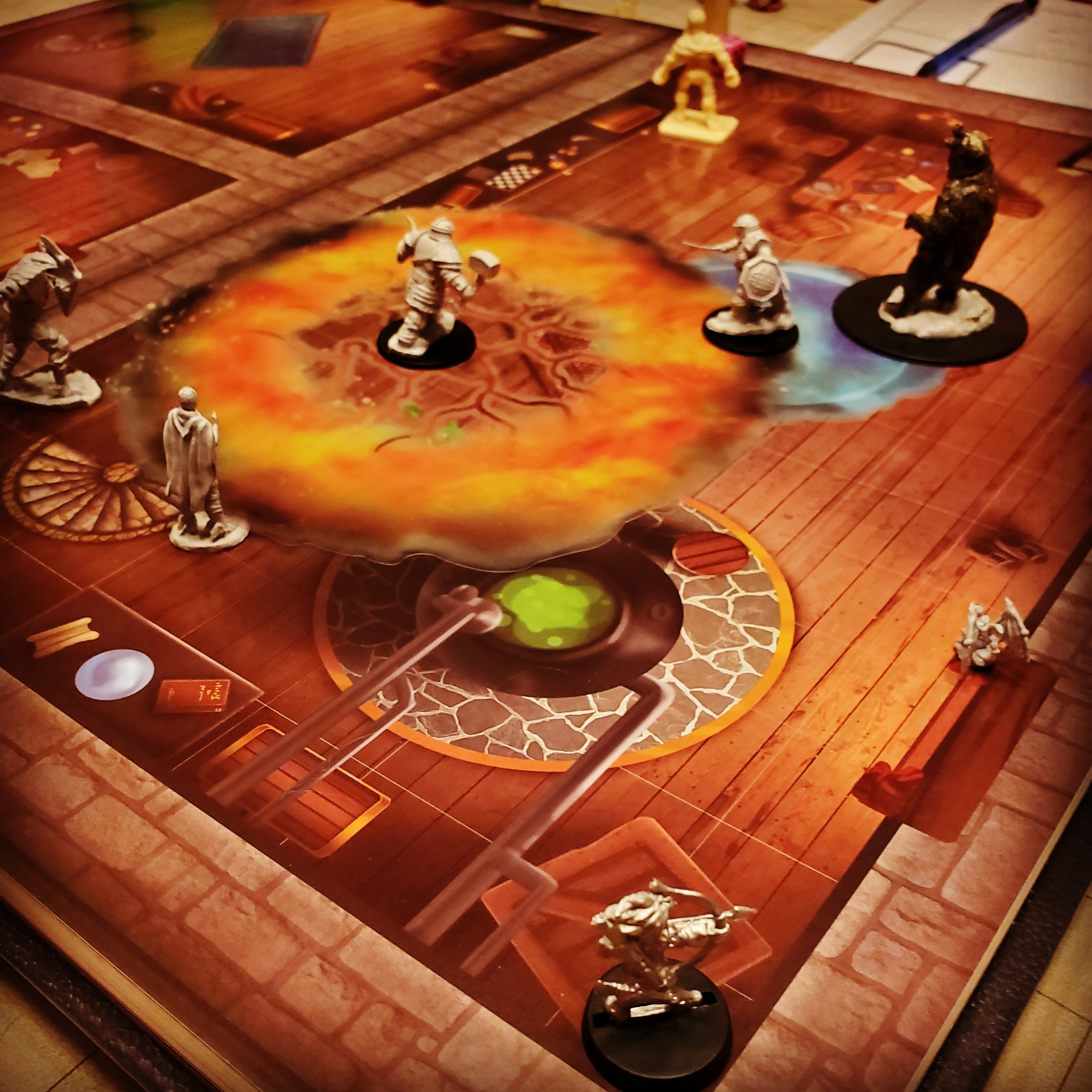By: Kelly Allard
Way back when I was young and sans kids, my friends and I would stay up until the wee hours of the night doing nothing but table-top gaming. Dungeons & Dragons, Call of Cthulhu, Vampire the Masquerade… basically whatever we could get our hands on that went well with a 10-pack of tacos from Taco Bell and 64oz of Mountain Dew.
Now that we’re parents, our nigh-continuous gaming has mellowed to a semi-monthly laid-back game of Pathfinder that ends shortly after our children’s bed time. Early on, we thought we could let the kids have a movie and we’d play while they were off relaxing in their own world. We were quite mistaken!
While normally Simba’s harrowing tale of triumph in the face of danger would hold kids enthralled for its entire action-packed 90 minute run, it is apparently FAR less interesting than what the grown-ups are doing. To save on frustration, we let our little ones join our table.
Don’t get me wrong; I’m excited for the day that my daughter gets the idea of playing a character in more than the “put on a costume and preface my name with princess” kind of way that pre-schoolers have. However, we aren’t there yet. We needed a way to make the game fun for her while letting us still play the game.
So, as any table-topping gamer parent knows, there are two incredibly interesting things about gaming for kids (and cats): dice and minis! We would let her roll for us. At first we’d call out the numbers, but as time went on, she’d tell US what she rolled. It was a great way to help her recognize numbers to 20. Also, as time went on, we could tell her which dice to roll instead of giving her a specific die.
Me – “Ok, That’s a 24 for me!”
Her – “It’s a 19.”
Me – “Yes, that is a 19, but then I get to add this 5 to it, and it makes it 24.”
Her – “This ‘dice’ says 1 next to 9, that’s 19 not 24, mommy.”
This teaches them varying quantities and allows them the ability to find their own ways to the answer. Also, it teaches the basics of the concepts of more than (greater than) and less than. If you are feeling particularly adventurous, you could even write their movement total on a white board, comparing the movement total to the character’s allowed movement (e.g. 20 < 30), laying the groundwork for eventually solidifying their understanding of the concept.
The thing to keep in mind is that whenever you add a child to your game, no matter the age, it is going to take longer. The amount of time it takes to do something simple seems to be inversely proportional to their age (provided that they are over 6 months or so.) Or to put it in simple terms: For n>0.5, t=1/n. Just be patient with them, answer their questions and teach them what’s happening. Table-top roleplaying games have some amazingly simple math and fantastic gaming concepts.
Looking for more games and math? Check out more articles here!


I really enjoyed this article, great job!